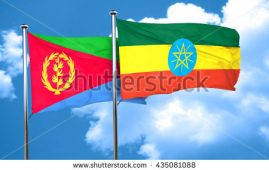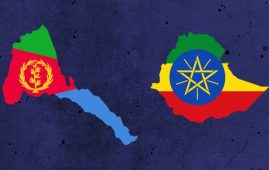World Health Organization(WHO) said ‘outbreaks of acute watery diarrhoea and measles have already been reported in Djibouti and Ethiopia’. A joint vaccination campaign is to be conducted ‘along the Kenya-Somali border and in the Dadaab refugee camps [Kenya]’ for this week, according to the alert issued by WHO.
WHO noted that frequent drought coupled with shorter recovery periods have depleted the household resources, thereby exhausting the coping capacity of communities in the Horn of Africa.
It stated:
Lack of water and population displacements, which result in precarious sanitation, further increase the risk of communicable diseases such as cholera, typhoid fever, diarrhoea, acute respiratory infections and measles. Outbreaks of acute watery diarrhoea and measles have already been reported in Djibouti and Ethiopia.The effects of the drought are also aggravated by weak health care systems, with limited human resources and medical supplies and low immunization coverage.
The areas most severely affected are also those suffering from some of the highest disease burdens in the region. For example, in Somalia, child health is among the worst in the world. Infant mortality is estimated at 88 per 1000 live births and under-five mortality at 142 per 1000. In the first half of 2011, at least three Somali children died of malnutrition every day. In parts of Southern Somalia, one in three children is malnourished.
A July 25-29 vaccination campaign in the Kenya-Somali border and in the Dadaab refugee camps is planned to ‘cover polio and measles and include vitamin A supplements and deworming tablets’. The campaign is expected to reach up 215 000 children under five and to be conducted by UNICEF and WHO, in cooperation with the Ministry of Health of Kenya.
WHO said ‘the main objective for health partners is to avoid excess mortality and morbidity from malnutrition and communicable diseases among the most severely affected communities in countries affected by the drought’.
However, its emergency health response is severely underfunded – with only 22% of the funds needed for Somalia, 5% for Djibouti and less than 2% for Kenya received so far, according to the statement from WHO.
In a related development, Kenya has agreed to open a new refugee camp, Ifo II camp, near its border with Somalia, which can fit up to 80,000 people, the end of this week, BBC reported.
Prime Minister Raila Odinga said: "Although we consider our own security, we can’t turn away the refugees."
But the prime minister rejected criticism that Kenya should have opened Ifo II earlier. He said Kenya had lived with the refugee crisis for 20 years and had been asking the international community for help all that time.
"They are only now responding when they see people are dying. The international community is always very later in acting. So the Kenyan government is a victim, not the accused."
As reported earlier, the three camps Dadaab refugee complex, initially built for some 90,000 refugees, had already housed about 370,000 refugee. Yet, Kenya had been refusing to set up a new one.





